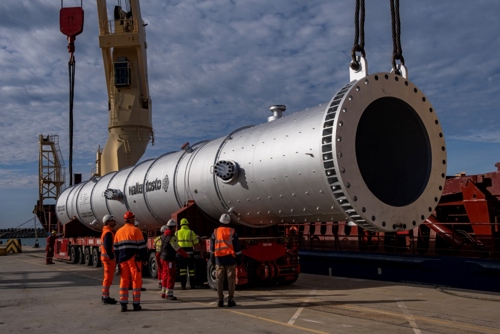UPDATE: Galp's Sines Refinery receives reactors for advanced biofuels production
- The new sustainable aviation fuel (SAF) and biodiesel unit is one of Galp’s decarbonization projects.
- Weighing a combined 500 tons (t), the three reactors were unloaded this week
at Terminal XXI of the Port of Sines and arrived yesterday at the refinery.
The three reactors for Galp's new advanced biofuel production unit arrived in December at the Sines Refinery, where they will produce aviation fuel and diesel of biological origin starting in 2026.
The arrival of these reactors marks an important milestone in the transformation project of the refinery, and a European first: it will be the first advanced biofuel production unit integrated in a refining system that includes an industrial-scale green hydrogen (H2) production facility, also under construction at the Sines site.

“These projects, two of the largest of their kind, represent a total investment of €650 MM. This is a significant contribution to the transformation and growth of the industrial sector in Portugal, placing Galp at the forefront of developing low-carbon solutions essential for the energy transition,” said Filipe Silva, Galp’s CEO.
The 100-MW green H2 unit, an investment of €250 MM, will produce up to 15,000 tpy of H2. The advanced biofuels unit, which will incorporate the newly arrived reactors, represents a €400-MM investment, in partnership with Japan’s Mitsui. Its nameplate production capacity is 270,000 tpy. The biofuels project alone will employ during the construction phase an average of 750 workers and 1,150 at its peak. It will create 76 permanent jobs during the operational phase.
The facility will process treated vegetable oils and animal fats, converting them into biodiesel with identical characteristics to traditional mineral diesel used in combustion engines and aviation fuel. The chemical reaction takes place inside these reactors through the injection of hydrogen and the application of pressure and heat.
The reactors were unloaded at Terminal XXI in the Port of Sines.






Comments